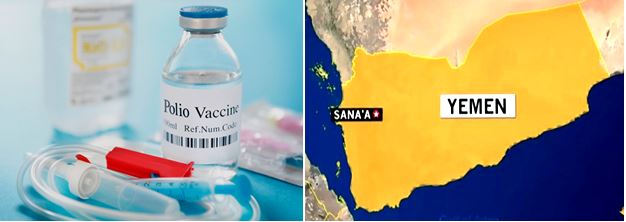EVALUATION OF THE IMMUNE RESPONSE TO POLIO VACCINE IN MALNOURISHED CHILDREN IN SANA'A CITY
Keywords:
children, malnutrition, PEM, polio vaccine, POV, Sana'a city, YemenAbstract
Objective: This study was made to evaluate the immune response to polio virus vaccine among PEM children by measuring the level of circulating Immunoglobulin G (IgG) antibodies against polio virus (IgG-PV) after immunization with the primary series of POV, and determining the coverage rate of universal childhood vaccine for polio virus. A cross-sectional laboratory study was conducted in Department of Medical Microbiology and Clinical Immunology, Faculty of Medicine and Health Sciences, and Al-Sabeen University Hospital, Sana’a University.
Methods: A total of 279 PEM children were selected and investigated for universal childhood vaccination coverage rate for polio vaccine. Blood samples were collected from all, then tested for levels of IgG-PV by ELISA method. For assessment IgG-PV levels more than 10 units/ml were considered protected against polio virus infection.
Results: The coverage rate of polio virus vaccine for first year vaccine was 96.8%; and 91.1% of vaccinated PEM children responded to the vaccine with mean level of 46.2 U/ml. A statistically significant difference was observed with respect to sero-protective IgG-PV between males and females (85.7% and 94.1% respectively, p=0.002); and older children (>37 months) (97.7%).
Conclusion: We conclude that a small proportion of malnourished vaccinated children with a normal immune status were not serologically immune to polio virus infection, and remain to be reconsidered for either revaccination or booster doses due to lack of or inadequate response. PEM group gave slightly reduced response to OPV hence there is need to give this group IPV (injectable polio vaccine) along with OPV and different micro-nutrition deficiencies like Zinc and iron.
Peer Review History:
Received 4 February 2018; Revised 11 March; Accepted 14 April; Available online 15 May 2018
Academic Editor: Prof. Dr. Gorkem Dulger , Duzce University, Turkey, gorkemdulger@yandex.com
, Duzce University, Turkey, gorkemdulger@yandex.com
Reviewer(s) detail:
Dr. O.J Owolabi , University of Benin, Nigeria, owolabi@uniben.edu
, University of Benin, Nigeria, owolabi@uniben.edu
Dr. Sameh Abdelmoneem Mohammed Ali , Faculty of Pharmacy, Beni-Suef University, Egypt, same7_pharma18@yahoo.com
, Faculty of Pharmacy, Beni-Suef University, Egypt, same7_pharma18@yahoo.com
Downloads

Published
How to Cite
Issue
Section

This work is licensed under a Creative Commons Attribution-NonCommercial 4.0 International License.










 .
.